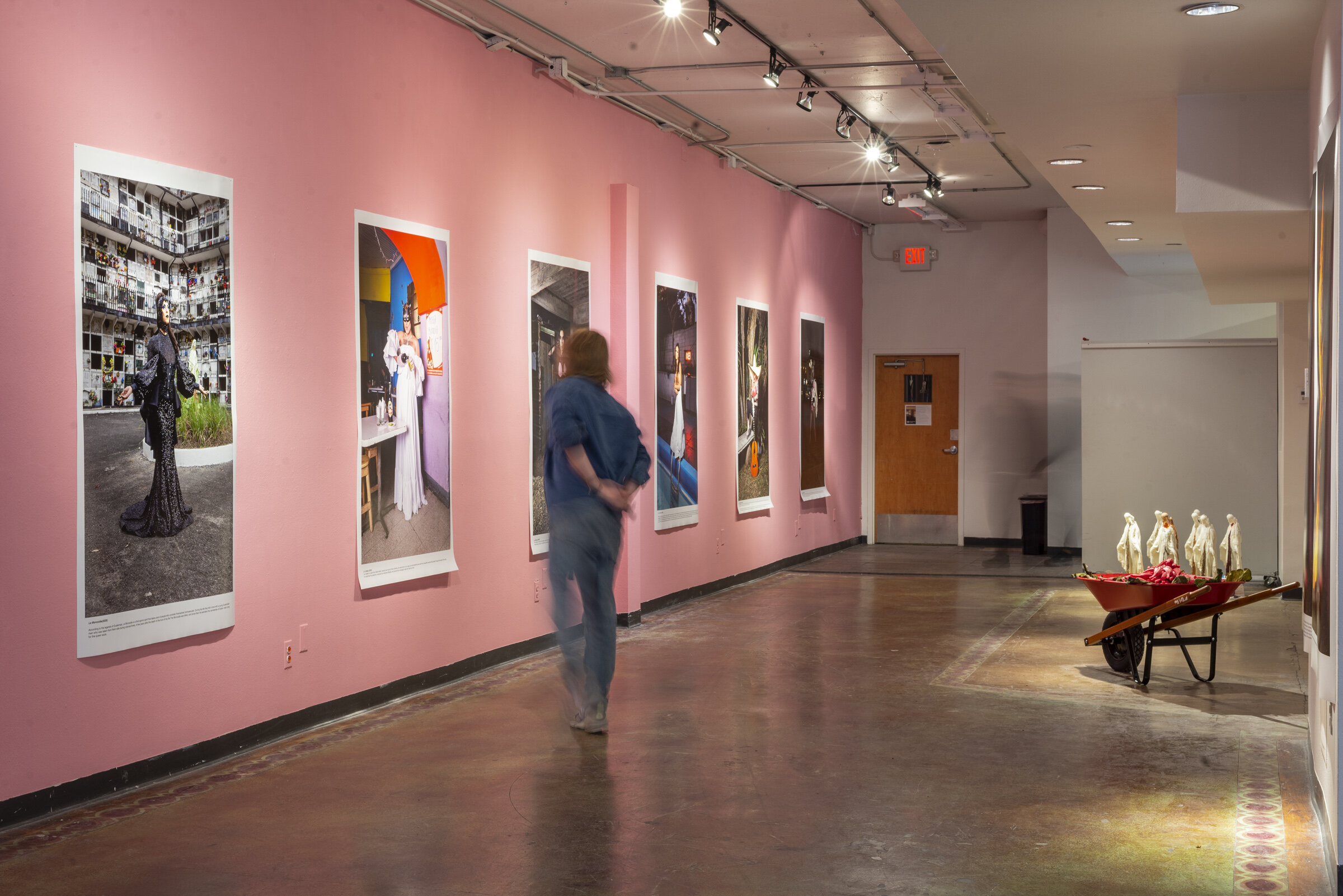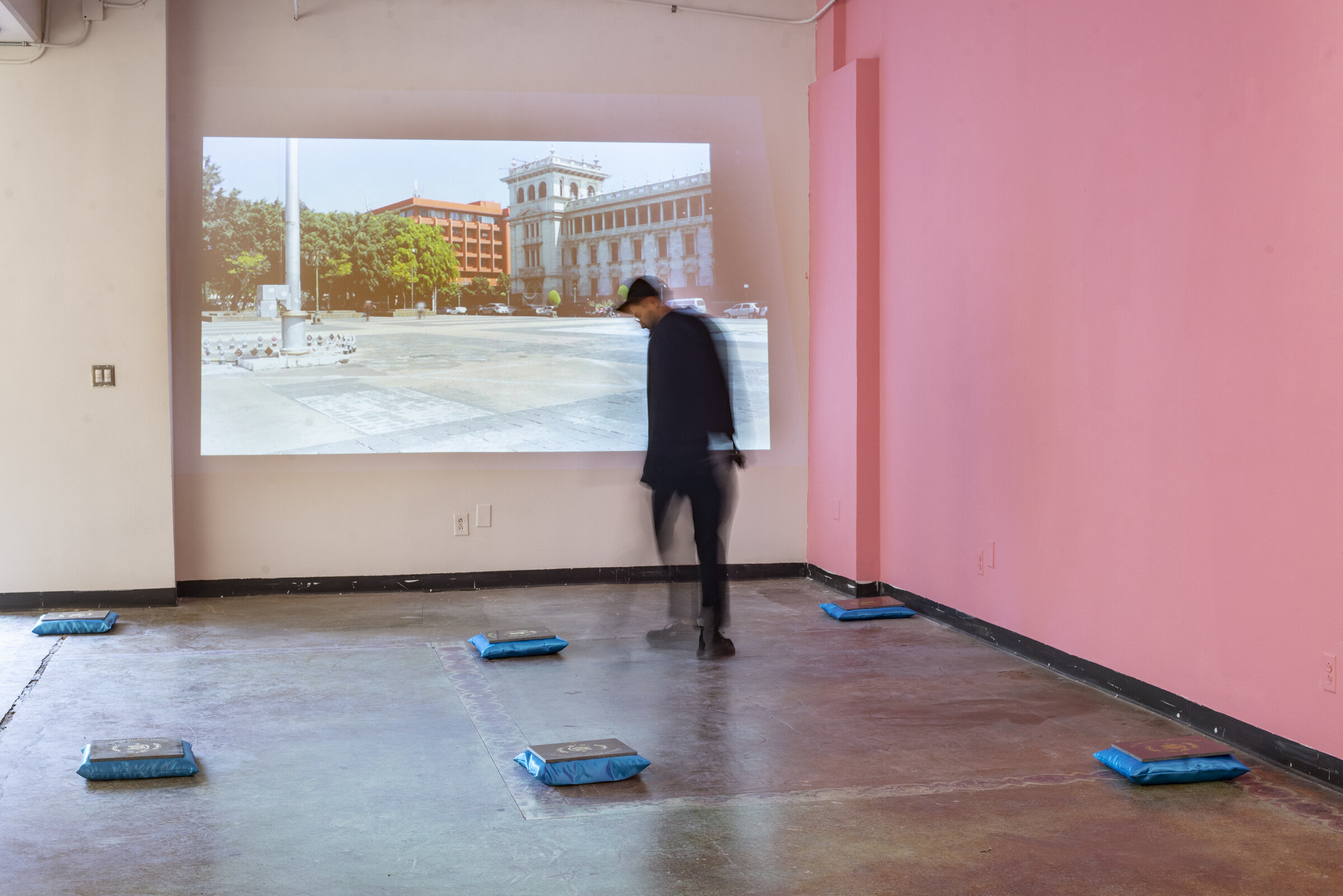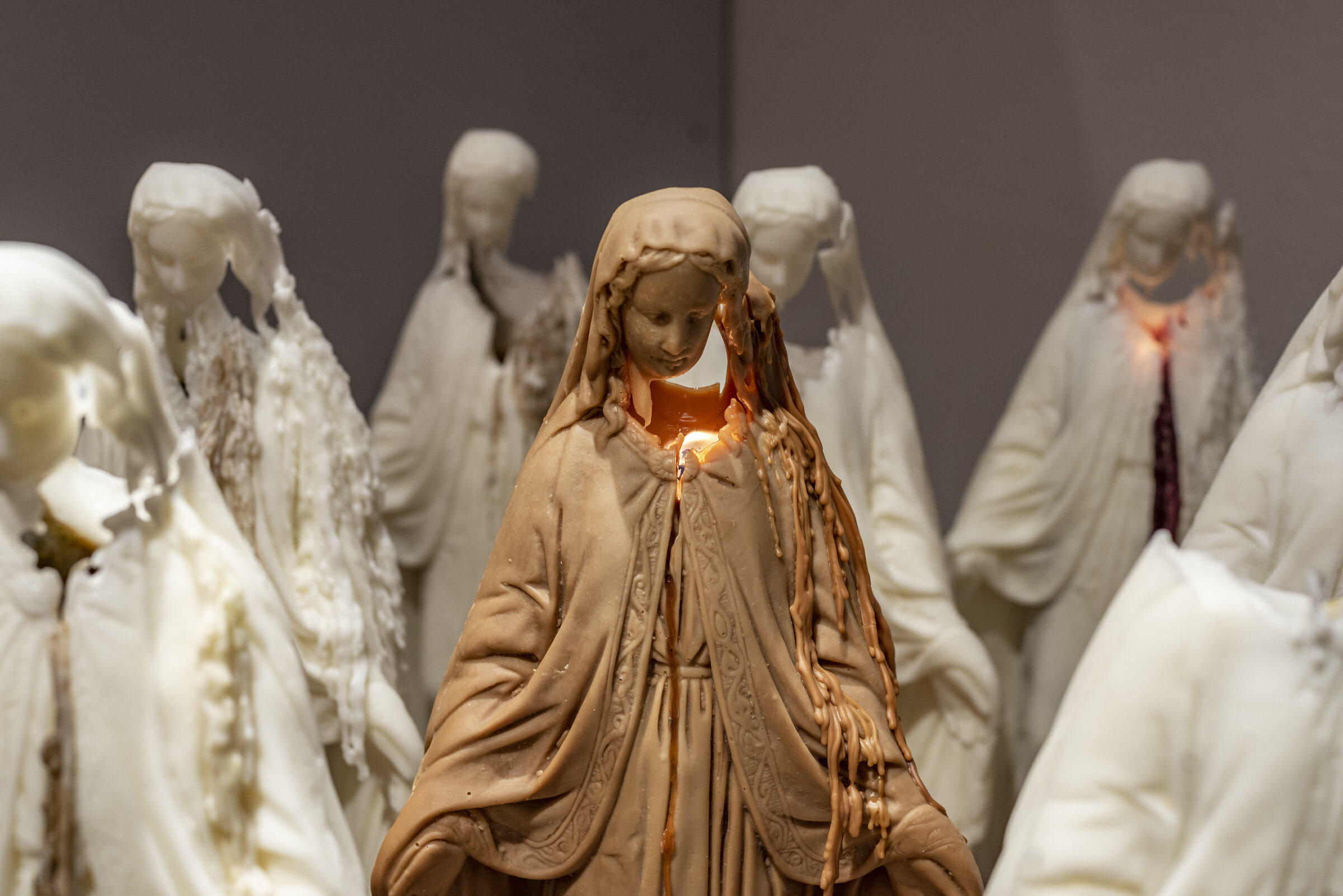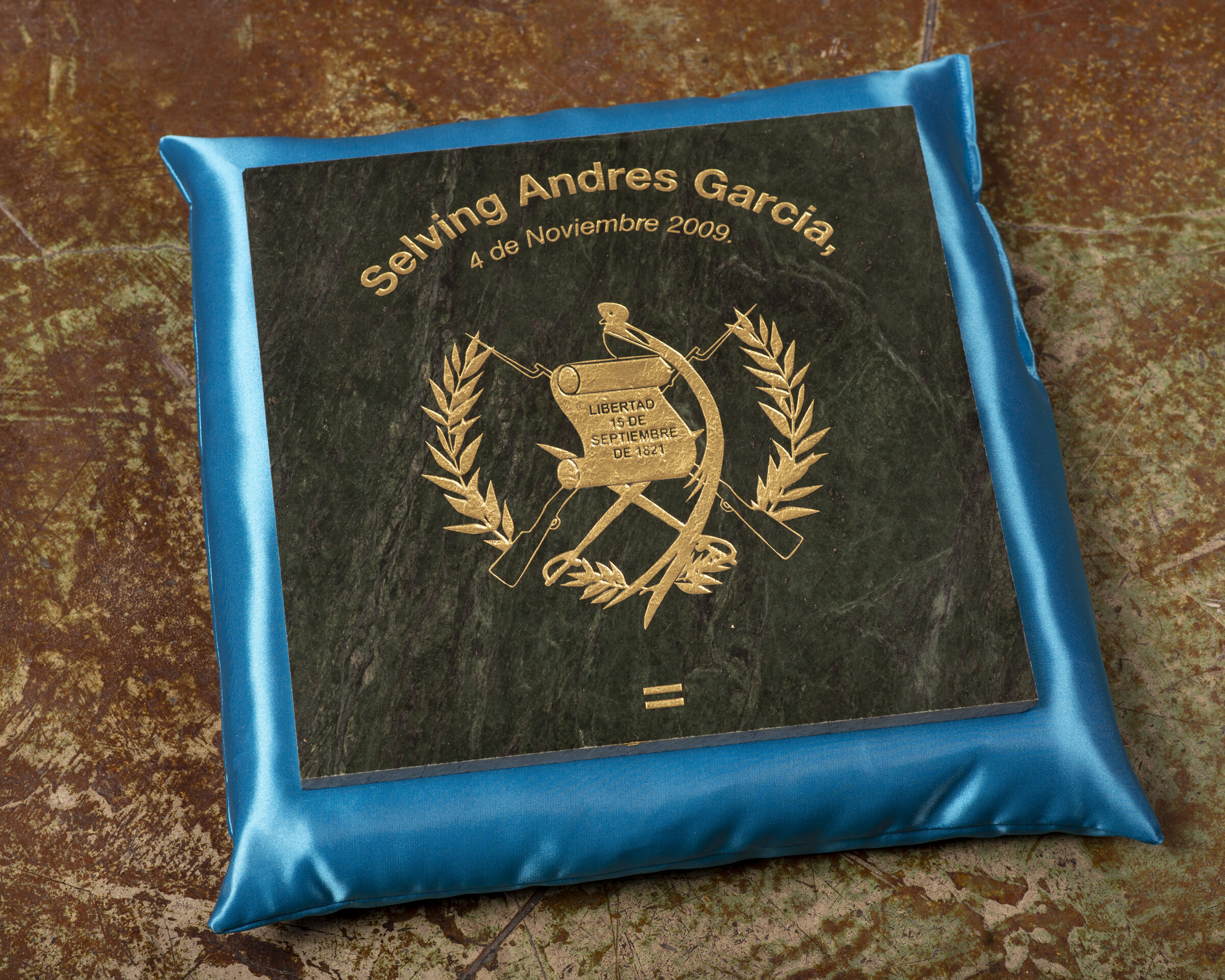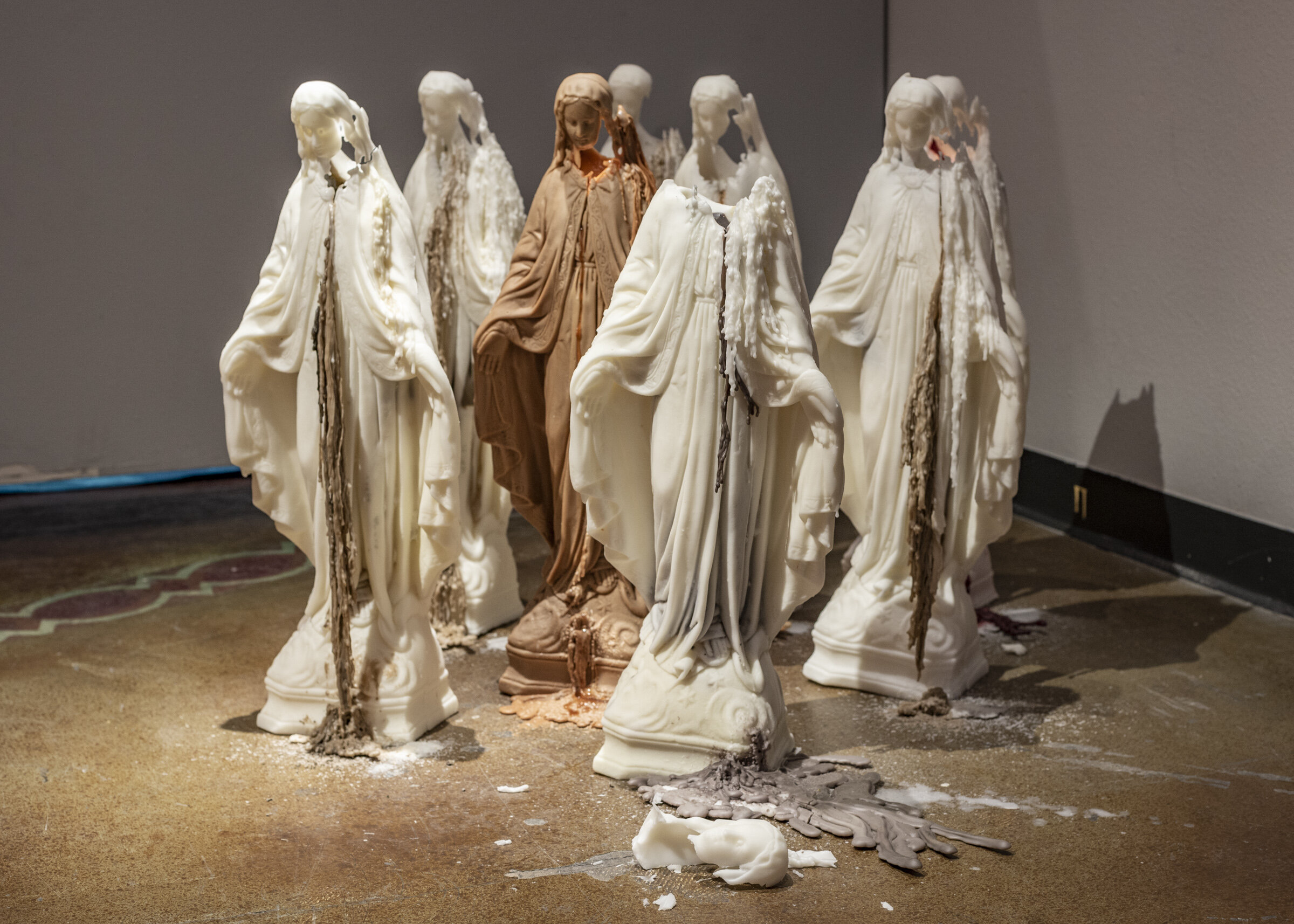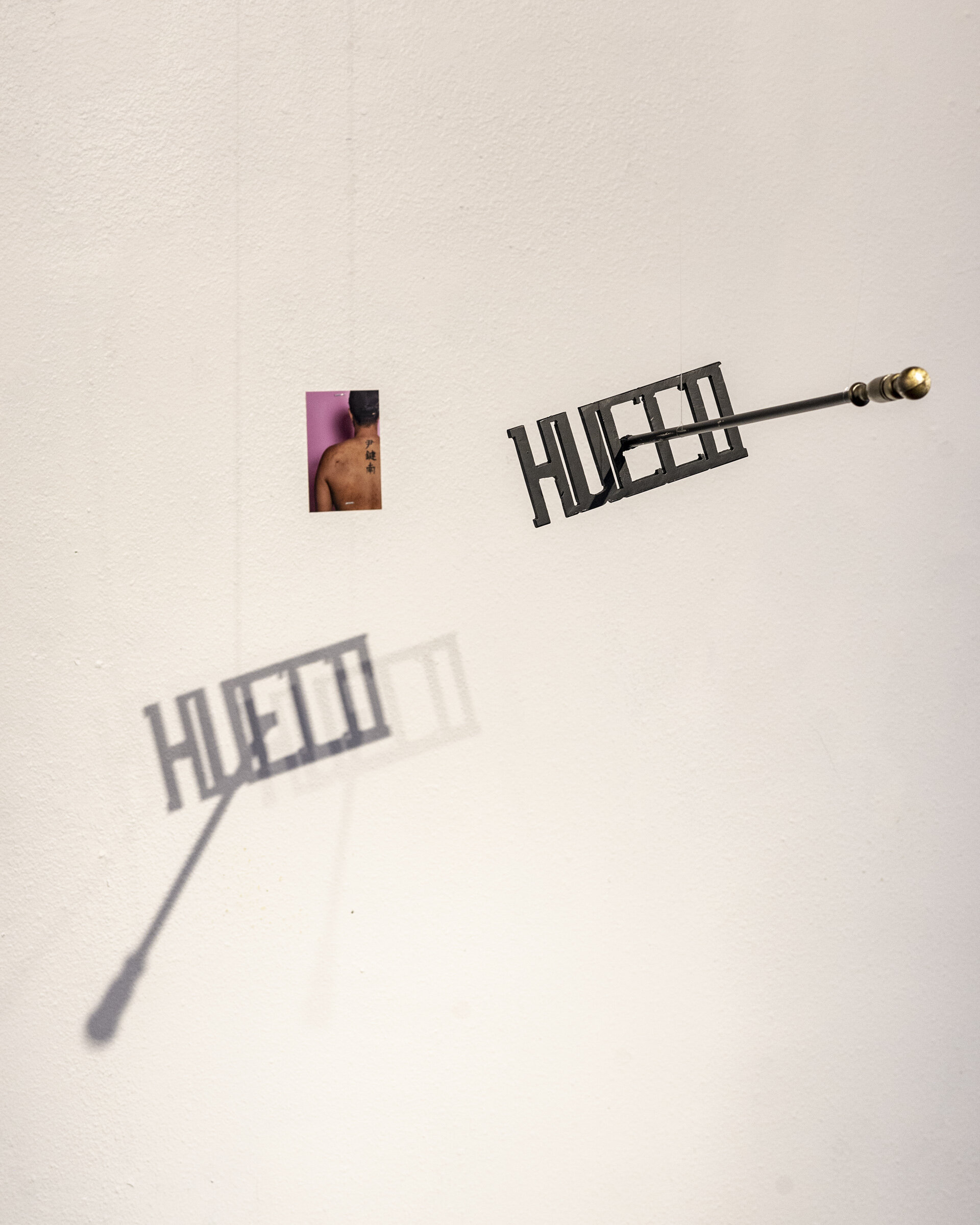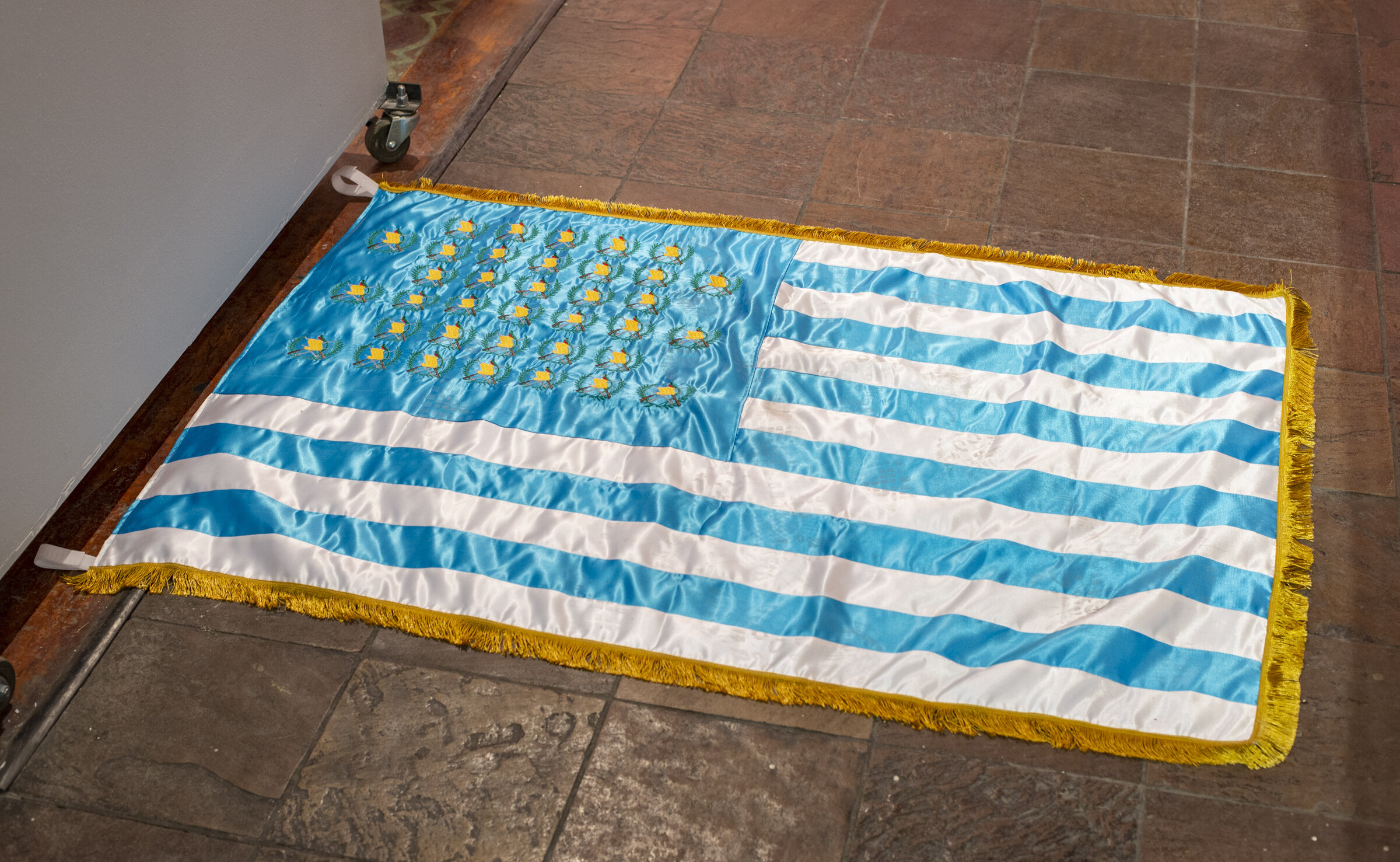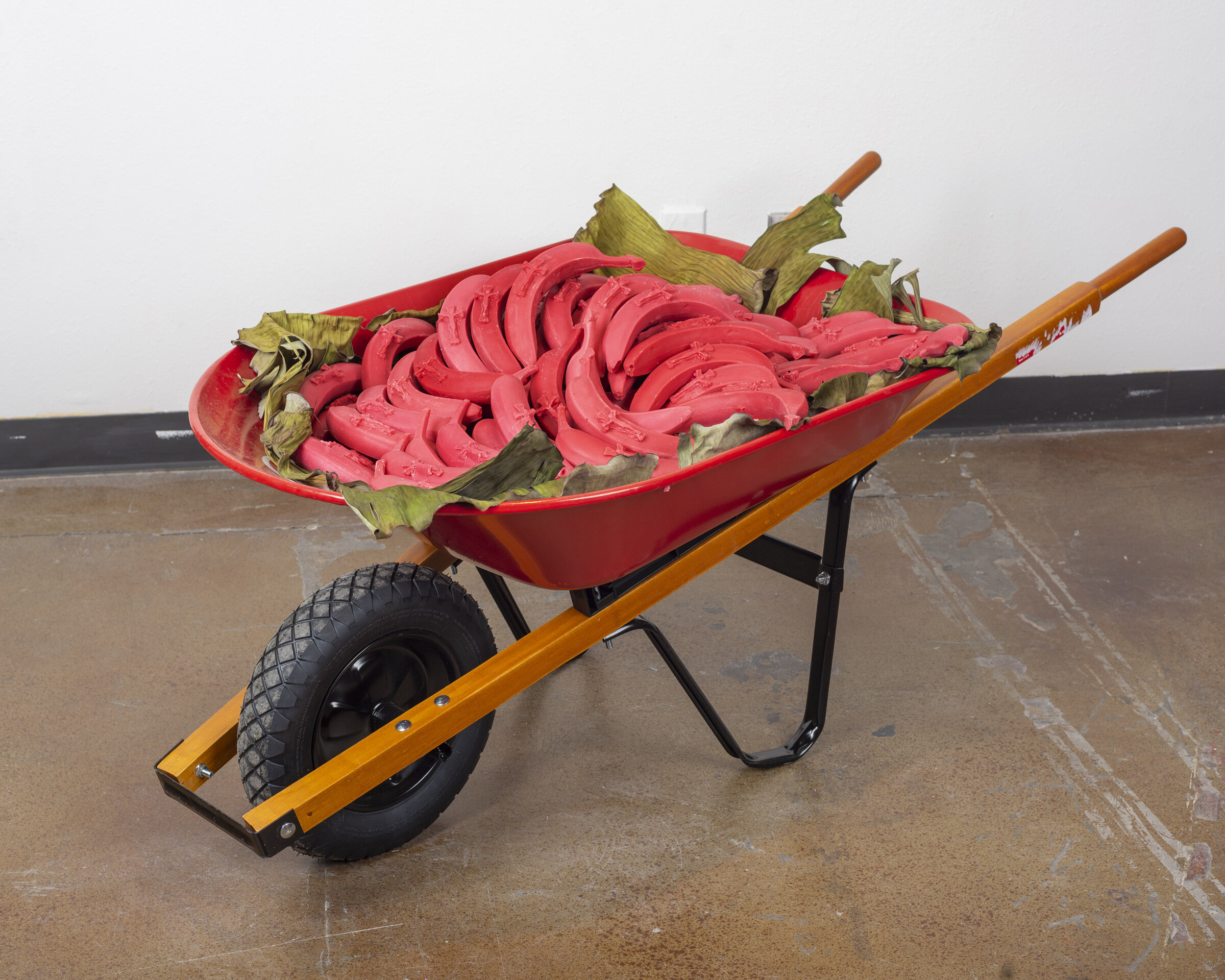@ CFA DOWN TOWN STUDIO
Martín Wannam’s La Eterna Resistencia: To be hueco in my country
by David Saiz (abstract)
“… Martín Wannam’s M.F.A. thesis exhibition, La Eterna Resistencia. The exhibition presents a visually stimulating and dynamic exploration of mediums utilized to challenge the artist’s politically and religiously conservative homeland. In challenging Guatemala’s hetero-normative, patriarchal, classist, and religious social hierarchies, Wannam engages in counter-discourse through appropriation and deconstruction of national and cultural symbols that edify the country’s mythos. The Guatemalan people have a 300-year long resistance to the authoritarian violence that has historically been inflicted by Spanish conquest and today maintained by political leaders and U.S. intervention. As part of the “Northern Triangle,” which includes El Salvador and Honduras, Guatemala is one of the most dangerous countries south of the U.S.-Mexico border. As reported in the 2018 data reports of three human rights organizations (Kids in Need of Defense, Latin America Working Group, and Women’s Refugee Commission), sexual and gender-based violence “by gangs and organized criminal groups, hate crimes, and abuse by authorities, [forces] many LGBT[Q] individuals to migrate in search of safety,” with many violent crimes unreported due to fear of reprisal or further discrimination by authority figures.[i]Wannam, having grown up in Guatemala, as a queer person of color in a working-class and Catholic family, is aware of the many ways that social institutions have marked queer and brown bodies as disposable, valueless, and degenerate. Extracting visual iconography from everyday items, as seen in the artist’s public and private life, such as his use of flags, piñatas, religious icons, bananas, and the brown body, the systems of coloniality referenced by these symbols are critically exposed. Wannam’s work dissects the signifying power that these symbols hold in sustaining ideologies of racism, sexism, and heterosexism while simultaneously exposing the corruption and fragility behind the nation’s systems of orthodoxy. “

